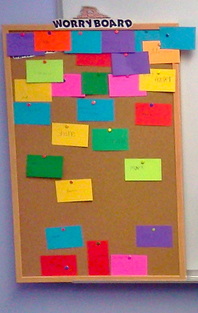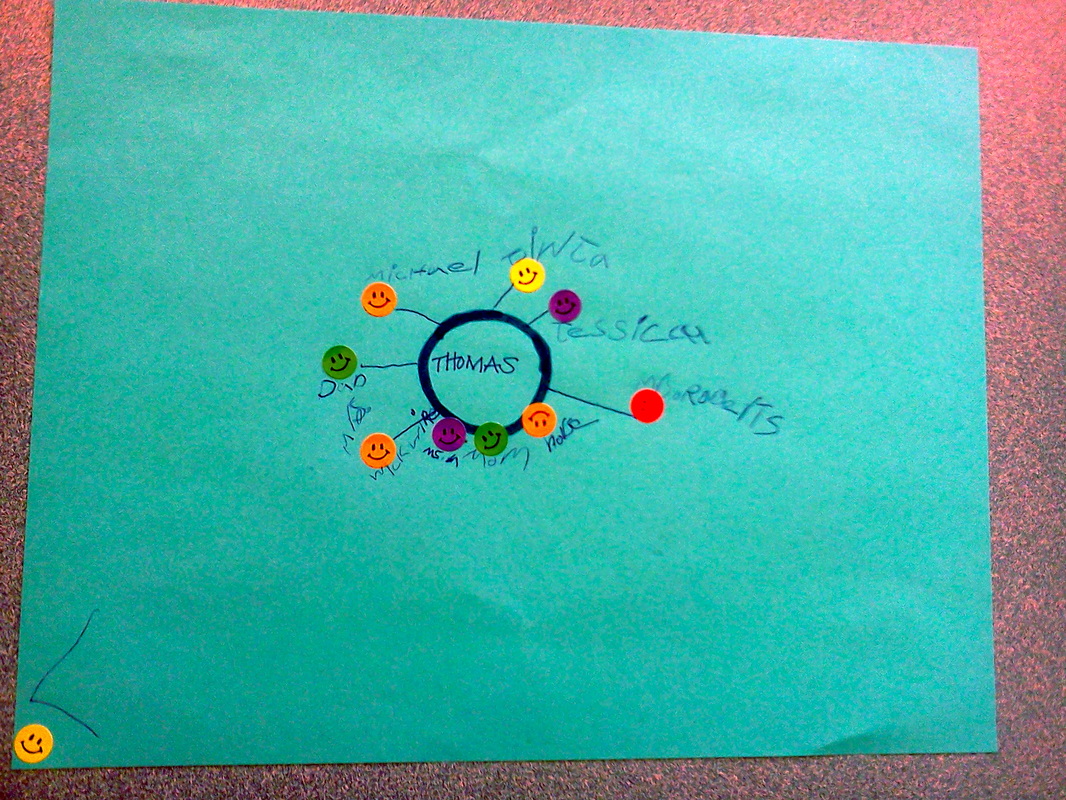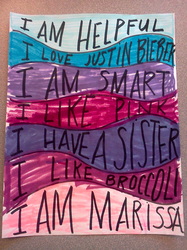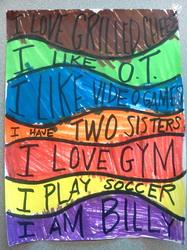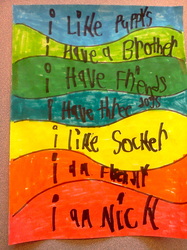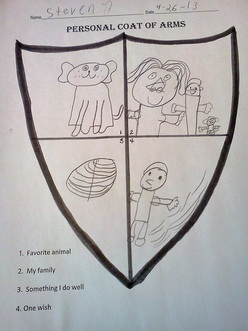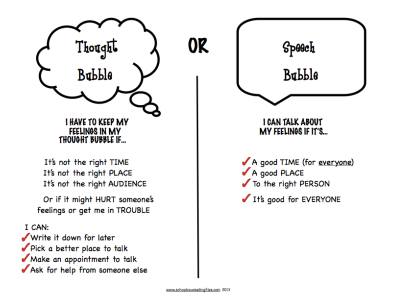Individual Counseling Activities
Over the years I've collected a lot of activities to use with kids in individual sessions. I look for things that are fun---or at least feel quite different from "regular" school work---but that also teach skills or give me information about how a student is functioning.
Of course, most of the activities listed in the other Counseling Activities sections may also be used with individual kids. For a more in-depth explanation of some of these ideas, click the link. I do tend to go on.
Of course, most of the activities listed in the other Counseling Activities sections may also be used with individual kids. For a more in-depth explanation of some of these ideas, click the link. I do tend to go on.
|
Worry Board - Ask the child to write his first name on one side of an index card. If he is very concerned about privacy, he can use his initials or an alias. On the other side, ask him to write his biggest worry or problem of the week. Have him pin it on the board to show how big that worry or problem is. The higher he places the card, the bigger the worry. Then next week, check the card and see if that issue is still a problem. If it is, see if it's gotten bigger, smaller, or stayed the same. If it's no longer a worry, put it in their file or let the child tear it up and throw it in the recycling bin. |
|
Social Atom - Tell the student that she is like the nucleus of an atom, and other people in her life are like the protons and electrons: family members, peers, teachers, etc. Some of these people are closer to her than others, which of course is how it should be. Have her write her name in a circle in the center of the paper, then think of the common relationships in her life (good and bad). She should place a dot on the paper representing each person. The closer she feels to that person, the closer she should put the dot to her name. If you want to get at some specific information, ask.
|
|
|
Student Self Assessment - My friend Jen Aldrich and I designed this to help kids think about their strengths and weaknesses through a Collaborative Problem Solving lens. Click here for a fuller explanation of how to use it.
|

|
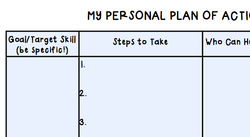
The next step is to work out a plan of action. This helps kids learn to break tasks down and---just as importantly---identify who can help them and how they'll know when they've reached their goal.
Personal Museum - Find out what's most important to a child by asking her to create a museum about herself. Click the link for a printable drawing page from Dr. Lawrence Shapiro. It would be fun to adapt this in other ways too, like by having her choose items from a sand tray, or to collage it with cut-out pictures from magazines.
Change can be Beautiful - Okay, this is a pretty labor-intensive craft project, but so worth it! Change is stressful, but it can be beautiful too. Help kids make a kaleidoscope to help them remember that.
Change can be Beautiful - Okay, this is a pretty labor-intensive craft project, but so worth it! Change is stressful, but it can be beautiful too. Help kids make a kaleidoscope to help them remember that.
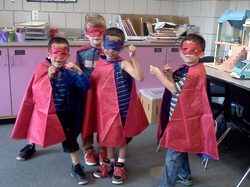
Imagine Yourself as a Superhero - The superpowers that kids wish they had can tell us a lot. Have them choose their favorite superpowers, then draw themselves and write a newspaper story about their debut.
Want to use social superhero power cards? Check out these in my TpT store.
Want to use social superhero power cards? Check out these in my TpT store.
Colorful Me - Divide a page by drawing big squiggly lines (I drew 6). Have the student pick out his 7 favorite markers and color each stripe a different color. In each stripe, have them write a different fact about themselves (an interest, a describing word, something they enjoy). The bottom one should be "I Am (Name)." I did the writing for the younger kids if they wanted me to.
This is one of the first activities I did with kids a couple of years ago as a get-to-know-you activity.
This is one of the first activities I did with kids a couple of years ago as a get-to-know-you activity.
|
Thought vs. Speech Bubbles Kids are familiar with the difference between thought bubbles and speech bubbles in comics or cartoons. But you can explain that a speech bubble contains words that are spoken aloud, while a thought bubble contains words, ideas, or pictures that are in someone's brain. No one else can see or hear them. For that reason, we are able to think anything we want---even if it's angry or mean---but if we say our thoughts out loud, sometimes we can get into trouble.
Check www.socialthinking.com for ideas on how to work on this concept. |
Personal Coat of Arms - I often do this one fairly early on, as another way to get to know kids. First I explain what a coat of arms is, then tell them they're going to make one for themselves. As with many of the things I do, I adapt the questions to fit the information I'm trying to get. The questions on this one were: 1. Favorite animal, 2. My family, 3. Something I do well, 4. One wish. |
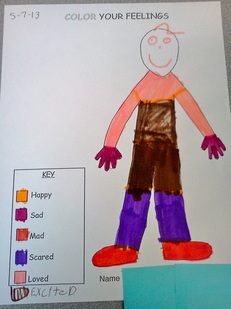
Color My Life - Give the child a blank piece of paper and a selection of colored pencils or crayons. On one side of the paper, make a "key" where the student picks one color to represent the different feelings he's had in his lifetime (you can either give them a set list of a few basic feelings, or let them make their own list). The other side of the paper represents his life. Since we have feelings all the time, he is to fill up the entire paper, creating an abstract design using the colors he has chosen. He needs to use all the colors from the key in whatever proportion he has felt them in his life. If he chooses yellow for happy and feels like he's been mostly happy in his life, then the majority of the finished design should be yellow. I have younger kids color in a silhouette (left), just because it's less abstract.
